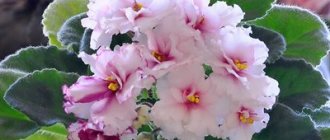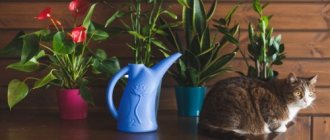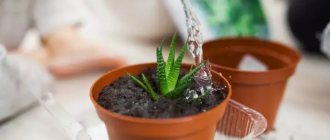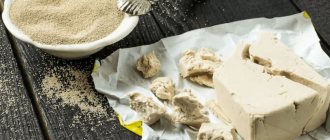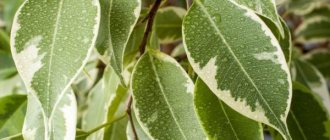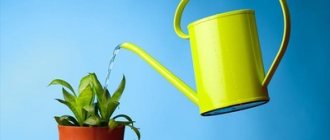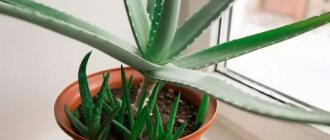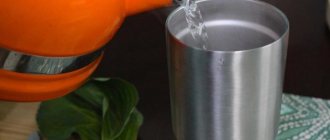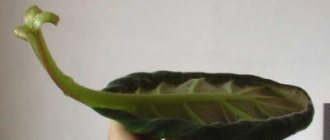How rich the harvest will be largely depends on how you water it. While weeds are mostly adapted to obtain water on their own, cultivated plants require forced watering. Otherwise, they will either die or will not develop normally. At the same time, you also need to be able to properly water your gardening plantings. The amount of incoming moisture, the frequency of its supply, the time of day, etc. play an important role here. Experienced gardeners who have grown dozens of crops in their lives often rely on their own experience. Those who have only recently begun to master crop production need to either learn from their own mistakes or first study the equipment in order to go out into the garden already prepared. Of course, the second option is more preferable, since it reduces the likelihood of ending up without vegetables and fruits. And our new article is designed to help you figure out how to properly water plants in your dacha, what watering methods exist, what their advantages and disadvantages are.
Popular watering methods
First of all, you need to understand that water supply technologies at a summer cottage and at large-scale agricultural plantations differ significantly. Therefore, let’s immediately make a reservation that we will consider methods and rules for watering relatively small planting areas in dachas and personal plots.
Here you can use the following options for providing plants with moisture:
- Snow retention. A natural method of irrigation that involves saturating the ground with melt water. Thanks to this, by the time the plants are planted, the soil does not have time to dry out and reduce its fertility.
- Hose irrigation. Perhaps the most common option in Russia, in which a hose is connected to the water supply system or well pump, with which you can water the most remote corners of the garden without constructing a complex pipeline system.
- Sprinkling. An automated version of the previous method. A rotating nozzle is connected to the free end of the hose, spraying a stream of water into many small sprays that evenly moisten a wide area.
- Drip irrigation. Various technologies, the common feature of which is the drip application of moisture. Experts consider this method of irrigation to be the most advanced and effective, but it can hardly be called simple.
Now we can consider the above options for water supply to cultivated plants in more detail, focusing on their features, advantages and disadvantages.
How to properly water flowers in a tray?
The classic method is top-down watering, that is, when water is poured into a pot onto the surface of the soil and moves through its layers down through the drainage into the pan. However, this method of watering is not always suitable. There are plants such as Saintpaulia, Soleirolia, and Cyclamen, which do not like cool water or wetness of foliage and rosettes. For them, it is worth practicing an alternative method of watering “from the bottom up”, in which water is poured into trays and, through capillary rise, is smoothly sucked into the pot, accumulating in the pores of the drainage and soil.
Snow retention
Of course, the absorption of melt water into the soil can only be called irrigation at a stretch, but it is of great importance for perennial garden crops, including shrubs and trees. If the earth is well saturated with moisture with the arrival of warmth, then the plants will quickly emerge from the wintering state and begin the growing season more actively. However, often just snow drifts may not be enough, so care must be taken to ensure that when the water melts, it remains on the site and does not flow beyond it. To do this you can:
- in the first half of March, trample the snow along the boundaries of the site to form a kind of parapet that will retain water;
- crush the snow or cover it with spruce paws (holiday trees left over from the New Year will also work), in this case it will melt more slowly and saturate the soil with moisture longer;
- plant tall annual or perennial grasses along the boundaries of the site, which will act as barriers that retain snow on the site.
Another way to use snow for irrigation is to accumulate it in some kind of reservoir (tanks, barrels, etc.) In the spring, this will be your strategic supply of water, which can be used before the launch of the central water supply system, which is especially important for SNT. In addition, filling a watering can from a barrel filled with water is usually easier than connecting a hose.
The main disadvantage of snow retention is its low practicality. In most cases, the snow melts completely long before active gardening activities begin, so this is more of an addition to the main watering.
How to measure soil moisture in pots
The ability to correctly determine the level of soil moisture makes it possible to water flowers only when they really need it.
The simplest and most reliable measurement methods:
- Touching the ground with a finger. If the substrate feels damp to the touch, there is no need to water the plant.
- Piercing the soil with a wooden stick. The stick must be immersed to a depth of 1.5-2 cm, removed and inspected. If it remains dry, you can start watering.
- Tapping the pot. When the soil is wet, a dull sound is heard when the container is tapped. A ringing sound indicates that the plant needs to be watered.
- Pot weight comparison. This method is suitable for flowers that are planted in small containers. It is enough to weigh the pot in your hand several times before and after watering, and remember the difference in weight, so that you can then accurately determine the current degree of soil moisture.
Several industrial devices help gardeners accurately determine the need for watering.
Humidity indicator
In appearance, the device resembles a ballpoint pen. Its lower end is easily immersed in the substrate or granulate in the area of the root system. At the upper end of the indicator there is a color scale. When the soil moisture level decreases, the color of the scale changes from blue to red.
Humidity measuring device
At the top of the gadget there is a scale with an arrow, at the bottom there is a fork, which should be inserted into the soil ⅔ of the length. The sensor detects the humidity of the substrate, and the arrow indicates its level on the scale.
Humidity sensor
The sensor is equipped with an electronic display.
In order for the device to begin recording the degree of soil drying, it must be buried into the ground by a maximum of 18 cm. The higher the value on the display, the drier the condition of the substrate.
Any of these smart assistants will relieve the gardener from the difficulties associated with insufficient or excessive watering.
Hose irrigation
The simplest and most familiar method to many, which, however, if performed incorrectly, can cause much more harm than good. It would seem that what could be difficult here? We turned on the water, picked up the hose, and poured it onto the ground. As experts say, this simplicity is imaginary; in reality, you still need to learn how to water with a hose. And here are just some of the subtleties:
- Do not pour cold water directly onto the leaves of plants - this can lead to thermal shock and slow development of plants;
- It is best to lay the hose directly on the ground so that the water gets immediately as close to the roots as possible;
- It is strictly forbidden to water with a hose in the heat of the day, because this can injure the plants;
- the optimal time for hose irrigation is late evening, when the ground has already cooled sufficiently from the heat of the day;
- The water pressure should be minimal so as not to erode the soil and roots, so it is better to put a special spray nozzle on the hose, ideally with variable operating modes.
Watering gun Multispray Plus Gun
At the same time, watering with a hose is, of course, most convenient if you come to the dacha only for a short time. In this case, the construction of more efficient, but also more complex systems may be unprofitable.
Proper watering of the plant. Measures to save flooded plants
There is such a thing as plant turgor. Turgor is the fullness of plant cells with water. If the plant does not have enough water, the leaves and branches droop and become lethargic, then they speak of a loss of turgor. If the plant has not been dehydrated for a long time, then it is enough to thoroughly saturate the soil with water so that the turgor is restored.
It should be noted that leaf wilting is not always associated with a lack of water. This can happen under the influence of sunlight, on the first clear day after long cloudy weather. Therefore, before sinning by improper watering, you should eliminate other errors that give a similar reaction to the plant.
Abundant watering
Plants are watered immediately after the earthen ball in the upper third of the pot has dried out (determined by touch by plunging a finger into the ground). This type of watering is required by most tropical plants with thin, delicate leaves (allocasia, begonia, fittonia, heliotrope), as well as some plants with leathery leaves (lemon, ficus, oleander, ivy), but only in the warm season, during the period of active growth.
Moderate watering
Plants are not watered immediately after the earthen ball dries out, but after two or three days, when the soil dries out in the top layer of the earth. This applies to plants with fleshy or heavily pubescent stems and leaves (peperomia, columnea), with thick roots and root
Rare watering
(palms, dracaenas, aspidistra, araceae), as well as with water-bearing tubers on the roots (asparagus, chlorophytum, arrowroot) and bulbous. For some plants, light drying is a prerequisite during the dormant period, as it stimulates the formation and maturation of flower buds (zygocactus, clivia).
Plants are left dry for several days, weeks, months. This applies to cacti and succulents, as well as deciduous tuberous and bulbous plants that have a dormant period (crinum, gloxinia, hippeastrum, caladium). In this case, the soil dries out completely in the pot. The water-storing organs of plants allow them to survive drought. Rare watering is carried out during the dormant period of plants, when all life processes are inhibited. For most plants, this period falls in the winter months and is accompanied by a decrease in temperature, sometimes very significant (up to +2-3 degrees, but on average up to +8-12 degrees). At low temperatures, plants are especially sensitive to excess moisture. But if for some reason the dormant period did not take place, the temperature dropped slightly in winter, the plant cannot be switched to infrequent watering. The frequency of watering will depend entirely on the temperature and speed of drying of the soil.
There are no general strict rules for watering; each type of plant needs its own watering regime, read about this in the Encyclopedia section.
What water to water
It is best to water plants with soft rainwater. Hard water (including well water) containing various salts should be avoided. Aroids, azaleas, orchids, ferns, and camellias are especially poorly tolerant of hard water. Those plants that grow on calcareous soils tolerate watering well with hard water. Collecting rainwater is difficult; it can be replaced with filtered or boiled water. Settled water is devoid of chlorine (it evaporates within a day or two), but not salts, so it can be used if it is soft enough.
How to soften water:
To soften hard water, add wood ash to it at the rate of 3g of ash per 1 liter of water.
You can also add fresh peat to the water at the rate of 100g per 10 liters of water.
It is not always recommended to water plants with boiled water, devoid of air. However, if other options for softening the water are not available, then it is better to boil it.
If funds allow, we can advise filtering water for irrigation through household filters. You can use special chemicals to soften water.
The water temperature should be at least not lower than room temperature. This rule is especially important when watering tropical plants. It is recommended to water cacti with warmer water. Watering plants with cold water can cause root rot, bud drop, and even plant death. On the contrary, watering plants in a cold room with warm water is also undesirable, because... this will cause the plant to grow prematurely. Watering with hot water, which is also practiced, stimulates plant growth. By hot we mean a temperature no higher than 45-50 degrees (the hand is hot). Holding, for example, oxalic acid. However, to do this you need to know exactly the degree of hardness of your water in order to accurately calculate the dose.
Sometimes the question arises whether it is possible to use tap water with hot water, diluting it with cold water. In fact, the chemical composition of water from a hot and cold pipe is almost the same, so if the water is soft enough, then you can use that water.
Of course, the most common method of watering is from a watering can; this is probably the simplest and most affordable method. Some plants that require very moist soil (for example, cyperus) can be watered by immersion: place in a tray of water, so that the water reaches ground level, for about 5-15 minutes. Then drain the water..
It is very convenient to water plants from plastic bottles. If you pour water into bottles and place them without lids, after a day the chlorine will disappear and the water will warm up to room temperature. Sometimes it is convenient to place bottles near the radiator, then the water will be a little warmer.
It is convenient to water crops, newly emerged seedlings, small plants, transplanted children or plants that require drip irrigation through a sprayer, adjusting the pressure from dusty spraying to the formation of a thin stream.
If the soil in the pot is dry:
It is best to water dry plants using the immersion method to moisten the soil more evenly. You need to lower the pot completely for some time (5-10 minutes) in warm water (25-30°C), poured into a large container, for example, a basin.
If the plant is very dry, keep the pot in water until air bubbles stop appearing. Then remove the pot, let the water drain into the tray and drain it.
Symptoms of overwatering flowers
How can we understand that this is a plant suffering from waterlogging? Leaf falling is one of the symptoms. In a number of plants, such as citrus fruits, they literally fall off - they darken and fall off. In others, for example, in aroids (Aglaonema, Dieffenbachia) or arrowroot, they darken, but still stay on the stems for a long time. In plants that form rosettes of leaves or pseudo rosettes (yucca, dracaena), the leaves do not darken immediately, but first become discolored and become pale yellow. But in other cases, a characteristic difference between leaves that die from waterlogging is darkening of the leaf. The leaf doesn’t just turn yellow, it actually darkens, the color changes from a healthy juicy green dirty-swamp shade, gradually turning into brown. If waterlogging is preceded by overdrying, the leaf first turns yellow, then the leaf petiole and the leaf itself darken.
When the plant doesn't have enough water
, the leaves always turn yellow, while the leaf tissues may lose their elasticity, droop, or may remain dry. After watering, turgor is restored and the leaves become elastic again. If there is insufficient nutrition, then interveinal chlorosis may appear; the leaves do not droop, continue to grow, but become smaller. When overmoistened, the leaves may lose their elasticity and droop, but after watering the elasticity is not restored, and the darkening of the leaves, on the contrary, increases. Sometimes the leaves can fall off even without darkening - still green. But leaf fall can also occur from watering with cold water. Ideally, the water temperature for irrigation should be 2-3 degrees higher than the room temperature, but not lower than 22 degrees. Cold water is not absorbed by the roots, causing the suction roots to die from hypothermia, and, as a result, leaves to fall off.
As for water hardness, it cannot be the reason for the sudden falling of leaves and death of the plant. If you water plants with hard water, even the most capricious ones, sensitive to excess salts, the plants will not begin to lose leaves en masse. All the damage manifests itself gradually: first, chlorotic spots appear, the tips or edges of the leaves turn brown, one or two leaves turn yellow, new leaves grow small and the plant looks depressed, but leaves do not fall off.
In case of massive leaf fall, when leaves fall off not one by one, but dozens at once, the reasons may be the following: sudden hypothermia (for example, during transportation home), watering with concentrated fertilizer (burning roots), severe drying out, and only hygrophytes and mesohygrophytes fly around en masse (and there are few of them), and waterlogging. Naturally, the first two reasons can be easily calculated, and it is also possible to distinguish overdrying from overwatering, but for this the plant must be removed from the pot. It is not always possible to feel the soil with your finger at depth (for example, the roots have grown greatly), and only by removing the plant from the pot can you determine whether the soil inside the root ball is wet.
Some gardeners wait until the last minute, not wanting to remove the plant and inspect the roots. They are either selflessly confident that there was no waterlogging, or they are afraid that an unscheduled transplant will damage the plant. But if there is even the slightest suspicion of waterlogging, don’t even doubt it - take it out and inspect the roots. Sometimes the root system of plants grows in this way: at the top the roots are not dense, the soil dries out easily between them, and in the lower part of the pot the roots form a tight ring, the intertwining of the roots makes drying difficult and in the lower part of the pot the soil dries for a very long time. This is especially aggravated by the fact that the holes at the bottom of the pot are small and clogged with pebbles or grains of earth. There is also a deplorable symptom that is characteristic of severe, prolonged waterlogging - darkening, blackening and wilting of the tops of the shoots. If a similar picture occurs, then the matter is already very neglected, and often it is simply impossible to save the plant. If the tops of all the shoots have rotted (yellowed or darkened), there is nothing left to save. A similar picture is possible only with severe hypothermia of the roots, and never occurs when the roots are overdried. When overdrying, wilting begins with old leaves, with lower shoots, and the trunk becomes bare from below. When overmoistened, the leaves wither in any part of the crown, but more often from above, from the tops of the shoots.
And of course, any softening of the stems or leaves of plants with fleshy parts of the body, and these are yuccas, dracaenas, dieffenbachias, any succulents (crassulas, adeniums, etc.), cacti - a sure sign of excess moisture.
Another symptom that is not entirely correct and does not always indicate a specific plant, but still makes you think, is the presence of fungus gnats. If a swarm of midges flies up from the pot, it means that you watered the flowers too much, perhaps it was once or twice, or perhaps you have become a habit of over-watering. Unlike mosquitoes, poduras (colembolas) are white or dirty-gray insects, about 1-2 mm, jumping on the surface of the ground in a pot - a sure sign that the flower is flooded more than once.
Measures to save flooded plants
When you have determined that the plant has been flooded, you need to take immediate action. If you establish the fact of waterlogging after removing the plant from the pot, then you will have to replant. If the fact of waterlogging is determined by indirect signs (falling leaves, damp soil to the touch), then the need for replanting depends on the severity of the situation.
If the plant has lost one or two leaves, or one branch in the mighty crown has withered, and the soil in the pot is quite light, then you do not need to replant the plant, but only loosen the soil. After watering, especially abundantly, the soil spreads out, and after drying, a dense crust forms on its surface. If this crust is not destroyed, the roots suffer from lack of air. If seed plantings are watered, the seedlings may not reach the surface of the earth and die from hypoxia.
If the pot has small drainage holes, you can widen them or increase their number without removing the plant from the pot, using a knife heated on the stove.
Personally, I never try to just loosen the soil; this is not very reliable and justified in cases where a flooded plant is in a very large pot, replanting is difficult, or when the plant is transferred from a cold room to a warm one, and the very increase in temperature will speed up the drying of the soil.
In all other cases, it is better to replant the plant.
So you take the plant out of the pot,
and you need to determine the condition of the soil and roots. Still, is the soil damp and how damp? Count how long it took to dry when you last watered. Sometimes a person is convinced that the soil has been dry for a long time, say, a week has passed since watering, but upon inspection it turns out that the soil inside the pot is still very damp. Then try to remember what the weather was like, how it happened that the soil did not have time to dry out! It is important to at least try to analyze in order to prevent this from happening, or to calculate which plants could still be flooded. For some people, floods occur systematically over and over again. This suggests that it is necessary to radically reconsider the care system: perhaps change the soil in the pots to a more structured, loose one, increase the drainage holes, add more drainage to the bottom of the pot; water with less water; move the plants to a warmer room or water less often when the soil dries out more. Sometimes you have to literally slap your hands so that you don’t rise with a watering can over the plant ahead of time...
Now examine the roots
. Rotten ones can be seen immediately - they separate, if you grab the root with two fingers and pull, the skin slides off it - it is brown or dark gray, underneath it there remains a bundle of vessels that looks like a wire, a hard rod. If such separation occurs, the root is rotten. Healthy roots do not separate; if you run your fingers over the surface, the top layer will not come off. In some cases, the roots do not exfoliate, the fleshy, succulent roots rot completely, and this is also immediately visible - they are dark, dirty gray or brown, sometimes softened. You can often identify healthy roots and rotten ones by the contrast in appearance: some are light, white, light brown, others are dark, not only on the outside, but also on broken or broken areas.
There are times when rotten roots break off easily and, when the plant is removed from the pot, fall off along with the soil. If you haven’t found any definitely rotten roots, but the soil and root ball are damp, you need to dry them. To do this, we soak the measles lump in any hygroscopic material: in a pile of old newspapers, in a roll of toilet paper. You can even let the plant with its root system exposed (without a pot) dry for several hours.
If you find rotten roots, you need to cut them off.
eat them, no matter how many there are. This is a source of infection, there is nothing to regret here. We cut everything down to healthy tissue. If the roots are fleshy, juicy, watery, then it is advisable to sprinkle the cut areas with charcoal (charcoal, birch) or sulfur powder (sold in pet stores). If there is neither one nor the other, crush an activated carbon tablet. If there are very few roots left, much less than there were, you need to transplant the plant into a smaller pot.
I have already said that a pot that is too spacious and not filled with roots does not contribute to the rapid growth of plants, and in some cases is even harmful. It is easier to fill a plant in a spacious pot. And even if you water carefully, the plant strives to grow the root system, develop a large surface of the earth, and only then enhances the growth of the above-ground part. So, you need to choose a pot for the root ball remaining after removing the rot. In this case, the rule will be effective: a smaller pot is better than a larger one. It’s okay if the pot is small, healthy roots will grow, notify you by their appearance from the drainage holes, and you just transfer the plant to a larger pot and that’s it. During the growing season, plants can be replanted at any time and more than once. If most plants get sick after transplantation or stop growing, this is most often due to improper care after transplantation, and not from root injuries.
After transplantation, plants should not be placed in the sun, even the most light-loving ones; they should remain under shade for a week. You can’t water plants on the same day, especially those that are being rehabilitated from overwatering; these plants generally need to be watered for the first time after 2-3 days. You cannot fertilize transplanted plants for 1-1.5 months. And when transplanting sick plants (including flooded ones), you cannot add dry fertilizers (neither manure, nor litter, nor granular fertilizers). Do not seal the transplanted plant in a plastic bag. This very package sometimes becomes pure evil. The fact is that transplanted plants, deprived of watering, must be placed in high humidity conditions in the first days. And many people try to put the plant in a bag and tie it tightly. In this case, the importance, of course, increases. But the availability of oxygen is reduced. As we remember, the plant breathes with both roots and leaves; if the plant has been flooded, it especially needs fresh air, and if pathogenic microorganisms have developed on it - various spots of fungal or bacterial origin, then it simply needs fresh air!
Here you can do this: place the plant in a transparent bag, straighten the edges, but do not tie it. If the weather is very hot, then you can spray it 1-2 times a day; if the plants do not tolerate water getting on the leaves, then simply place the pot on a wide tray with water on an inverted saucer.
If the plant has rotten crowns or ends of the shoots, they must be trimmed back to healthy tissue. If possible, at the same time take cuttings of the plant - cut off healthy branches for rooting, in order to be able to save at least something if the flood has already led to irreversible consequences. Sometimes it happens that the roots rot completely, but some of the shoots still remain vigorous until they wither (this is temporary) and cuttings can still be taken from them. In some cases, when the roots rot, toxins enter the vascular system of plants (the aforementioned swamp gases, products of bacteria and fungi) and cut cuttings, even healthy-looking ones do not take root, they are already doomed...
After transplantation, the flooded plant can be sprayed with growth stimulants (epin or zircon)
, only in the dark (most stimulants decompose in the light). If there are dark spots on the leaves, rotten tops of the shoots, then it is advisable to spray the plant with a fungicide, or add a fungicide to the water for irrigation. Suitable fungicides include: Fundazol, Maxim, Khom, Oksihom (and other copper-containing preparations). 3-4 days after transplanting into fresh, dry soil, the plant can be watered with a zircon solution.
If a plant that has a wide rosette of leaves in the form of a funnel, like bromeliads, is flooded, then it is necessary to dry the bases of the leaves. To do this, you first need to turn the plant upside down with its leaves. When the water drains, pour 2-3 tablets of crushed activated carbon into the outlet. After 3-5 minutes, carefully remove it with a soft fluffy brush. Many bromeliads rot when they are watered through a rosette of leaves in winter. Read more carefully the recommendations for growing a particular plant, and especially care in winter.
Another important point: after flooding, the soil in the pot turns sour: the roots of the plants continue to release carbon dioxide, the renewal of humus slows down, and humic acids accumulate, which increases the acidity of the soil, many nutrients turn into a form that is indigestible by plants. For example, iron goes into an oxidized form (F3+), which causes a rusty-brown crust to form on the surface of the earth. Oxidized iron is not absorbed, as a result the plant shows all the signs of its deficiency - severe chlorosis. This is especially noticeable on fruit plants: signs of calcium, iron, and nitrogen deficiency appear. At this stage, some gardeners do not pay attention to the condition of the soil and rush to treat the effect rather than the cause. As a result, the plant continues to suffer and turn yellow. At times it gets better (for example, after spraying with ferovit), but after adding fertilizer to the soil it gets even worse. In such a situation, the only way out is to completely replace the land. And if you were in a hurry to apply fertilizer, it is advisable to rinse the roots under running warm water when replanting. Then dry, remove rotten ones, sprinkle with coal and plant in fresh, dry soil.
If a white or red salt crust forms on the surface of the earth, this is a signal: the earth is taking a long time to dry! Such a salt crust must be removed and the top layer of soil replaced with a fresh one.
You can order Lechuza flowerpots with automatic watering, plants or plant care services by calling: (vel) +375(029) 171 94 42; (mts) +375(029) 503 80 17, and we will also provide the necessary advice. Contact us !
Leave a request or
Sprinkling
This method allows you to practically automate watering. All you need is to connect a special nozzle to the hose, which will rotate under the pressure of water and spray it around in the form of small droplets. As a result, you get both a large irrigation area and its uniformity.
However, here we must again take into account that cold water for plants heated under the sun can be quite dangerous. Therefore, if you pump water from a deep well, then such watering can cause significant damage to the plants.
Sprinkler HoZelock 2510
Sprinkler irrigation is best for insensitive crops such as potatoes, most root vegetables, and corn. Due to their “thick skin”, they react weaker to temperature differences. At the same time, this irrigation technology will not allow the area to become swampy or the soil to become saline. It is also impossible not to note the fact that small drops, falling into the ground from a certain height, better penetrate into the thickness of the earth.
The optimal time for sprinkling is again in the evening. It is better to use heated water, for example from barrels or a tank located on an elevated surface. This method is also suitable for applying fertilizers: they can be dissolved directly in irrigation water.
The disadvantages of this method, in addition to those mentioned above, include the following:
- high water consumption;
- relatively labor intensive - even if you use rotating nozzles, you will still have to move them regularly.
You also need to choose the right nozzle that will spray water. Here it is necessary to take into account the grip radius, the size of the droplets formed, and the reliability of the rotation mechanism.
Devices and devices for automatic watering on the market
If desired, you can purchase a ready-made model for automatic watering of flowers, which is capable of irrigating plants at a specified frequency. Moreover, it is possible to program the day and hour of watering.
Green Helper ODS 70
Fully automated drip irrigation system . Capable of simultaneously irrigating up to 24 plants in pots of different sizes. It is possible to program the amount of water for each plant, frequency and time of watering. No water connection required. Cost 3900 rubles.
Drops system
It is presented in the form of a dispenser plug, which is connected to a plastic bottle. The sharp end of the device is inserted into the pot. The system works by expanding air against the background of temperature changes.
Due to this, in hot weather there is an increase in the intensity of watering, and in cool weather - a decrease. Irrigation lasts for 20 days. The set contains 4 dispenser plugs. Cost – 630 rubles.
Foraworld 27 x 6 cm
The device is attached to a water bottle . It is possible to regulate the water supply. Includes 2 pieces. Cost – 1130 rubles.
For your information, there are “smart pots” on the market that can independently regulate the level of soil moisture; they come complete with a reservoir from which water flows to the root.
Drip irrigation
A highly efficient watering system that truly allows you to automate the supply of water to garden plants. It works as follows:
- oozing hoses or pipes are laid in the bite zone;
- moisture, passing through the resulting water supply, evenly passes through the perforation and enters directly into the root area.
The method itself is quite simple and at the same time effective. First of all, plants receive exactly as much water as they need. It is also important that watering is ensured evenly: water is supplied almost constantly in small doses, so the plantings do not experience significant stress.
Dripping hose PALISAD 1/2″ 8m
Drip irrigation is especially important for perennial crops, including those sensitive to humidity levels, in particular for vineyards. This method is also suitable for areas with difficult terrain. With intensive watering, water here will flow down the slope, eroding the soil and leaving the upper plantings dry, and with drip supply it will be almost immediately absorbed into the soil.
To organize such an irrigation system at your summer cottage, you can use a large reservoir located on a hill and oozing hoses. They can either be laid directly on the ground or slightly buried into it.
You can arrange a more complex, but also more reliable system:
- install a large barrel or tank (recommended volume - from 500 l);
- we assemble a water heating system (the optimal temperature for drip irrigation is 20-25 degrees);
- install a circulation pump;
- we lay a system of oozing pipes, including all trees and shrubs.
Such watering will be especially relevant on sandy soils, which absorb water very quickly. At the same time, it may be irrational to build such a system on a small suburban plot where mainly vegetables are grown. Therefore, this method is most often used in orchards, vineyards, etc.
Watering indoor plants in spring, summer, autumn and winter
DIY drip irrigation for indoor plants
There are several main periods: active growth and vegetation (spring-autumn), flowering period (most often in summer) and dormant period (winter). Caring for flowers in each of them should be different from the previous one so that they give lush, lush greenery and bright blooms.
How often to water indoor flowers in winter is not always easy to understand. Firstly, each flower has its own time frame for this period, for some it does not occur at all. Secondly, each individual species needs individual conditions. The frequency of soil irrigation depends on these parameters.
In winter, daylight hours are reduced, and many plants also need to reduce the air temperature in order to properly rest. If you manage to do this, then watering should be done rarely, as the soil dries out. Some species (for example, begonia) take a break from water altogether in winter. But, if it was not possible to ensure a low temperature, then watering should be reduced. Most often it is produced 2-3 times less often than in summer.
Indoor flowers during the dormant period
By spring, plants gradually awaken from winter sleep, move into a new phase and should be provided with proper watering. It becomes more frequent and intense. Summer, especially hot summer, is the period of the most abundant and frequent soil moisture. By autumn everything gradually decreases again.
Important! If the summer turns out to be cold and rainy, you should not be overzealous with the amount of water, this can cause rotting of the roots, especially in sensitive flowers. Because of this, they may die.
Types of irrigation
In addition to different methods, different types of irrigation are also used:
- planting - promotes better survival of plants planted in open ground;
- main - ensures the maintenance of a sufficient amount of moisture in the soil during the growing season;
- refreshing - used to prevent plants from withering when it’s too hot outside;
- anti-frost - if frosts are expected, such watering will help reduce the likelihood of plantings freezing;
- feeding - in this case, not pure moisture is used, but an aqueous solution of fertilizers.
To grow a healthy and abundant harvest, you need to use all these types in combination. In this case, it is necessary to comply with the individual requirements of different cultures, climatic features and other factors.
Factors influencing the irrigation regime
Fertilizers for indoor plants: varieties and feeding rules
How to properly water home flowers depends on a number of factors. More moisture will be required:
- in a phase of active growth and development;
- when placed in a large flowerpot or made of natural material;
- if the plant has large thin leaves;
- with a pronounced, good, powerful root system;
- at high air temperatures in the warm season;
- at low air humidity;
- with constant ventilation of the room.
Less intensive watering is required:
- in pots where the soil is not particularly loose;
- plants with thick, fleshy leaves or without leaves;
- flowers that have only recently been transplanted from another pot, weak and painful;
- owners of a short root;
- in the phase of slow growth or dormancy;
- in the absence of a drainage layer;
- in low temperature conditions;
- at high air humidity.
Rules for watering the garden
Regardless of which watering method you choose, you should adhere to a number of general recommendations:
- The optimal time to water plants most safely is early in the morning, while the air is still warm, and late in the evening, when the heat of the day has already subsided. However, if the nights are cold, it is better to water in the morning.
- Water supply must be regular, uniform and sufficient. It is better to water more often, but in smaller quantities, than to pour a week’s worth of water onto the beds and flower beds at once. At the same time, small volumes of it may simply not reach the roots, so the principle of sufficiency is important.
- Each crop has its own watering standards that must be followed. For example, if there is a lack of moisture, cucumbers begin to taste bitter, while tomatoes, if they are regularly overwatered, can begin to burst and rot.
- The hotter it is outside, the more water the plants need.
- If the weather is cloudy, then the volume of watering can be reduced, but not completely eliminated, because the clouds may not rain.
- In spring, the soil needs to be soaked to a depth of about 10 cm, since it still contains quite a lot of melt water.
- In summer, the average watering depth is 20-30 cm.
- The water should not be too cold or too hot. The optimal watering temperature range for most crops is 15-25 degrees.
- Freshly planted seedlings need to be watered daily, this will help them tolerate transplantation more easily.
- The most careful attention should be paid to watering from the moment the first shoots appear until the flowers form - at this moment, the regularity and sufficiency of water supply is especially important.
- The denser you plant the plants, the more abundantly they should be watered.
- Consider the characteristics of the soil. Loamy soils absorb moisture slowly, so you can water such areas less frequently. Sandy soils absorb water very quickly.
- When irrigated with water, a dense crust can form on the ground, which will prevent moisture and air from fully penetrating into the soil. Therefore, you must remember to loosen it regularly.
- Mulching helps increase the efficiency of moisture retention in the soil.
Is it possible to combine watering with fertilizing?
Even necessary! You can do this with every watering, following the example of European farmers, or according to the scheme of Doctor of Agricultural Sciences Mecheslav Stepuro . For every 10 liters of water add:
- for the first watering: 20-30 g of potassium or calcium nitrate;
- in the fourth watering: 30-35 g of potassium monophosphate;
- in the seventh watering: 20-25 g of magnesium sulfate (magnesium sulfate);
- in the tenth watering: 0.5-1 g of water-soluble iron sulfate, manganese, zinc, copper and boric acid;
- in the thirteenth watering: 30 g of potassium monophosphate.
- 10 tricks that will allow you to water your garden much less often
We tell you how to effectively retain moisture in the garden and beds.
Recommendations for watering in a greenhouse
If you grow plants in a greenhouse or greenhouse, then consider the following recommendations:
- The temperature here is higher than outside, so more water is required.
- To maintain constant humidity, you can install open containers of water in the greenhouse.
- Greenhouse cucumbers should be watered directly at the root.
- Tomatoes planted in a greenhouse or greenhouse should not be watered in the first week after planting.
When to water indoor flowers: time of day to water houseplants
Watering indoor plants in the absence of owners for 2 weeks or a month
The ideal time of day for watering is morning. This has been known for a long time and has been scientifically proven. After all, during the day the moisture has time to evaporate, and watering in the evening leads to the opposite result. Excess liquid can accumulate at the roots, which will not lead to anything good. Due to increased dampness, fungal infections can develop, and the underground part of the plant will no longer receive the necessary oxygen.
For your information! It's sad but true: more plants die from improper watering than from all other factors combined.
What should you pay attention to?
Understanding well why indoor plants are watered, many gardeners still make mistakes when performing this procedure. The most common are:
- using hard, cold tap water;
- too infrequent watering, leading to drying out of the roots;
- abundant, frequent moistening of the substrate, causing the development of mold and fungi.
The optimal frequency of watering depends on many factors: time of year, ambient temperature, air dryness, evaporation rate, soil structure. Some species must constantly be in water, while others can easily survive without it for months or years, collecting atmospheric condensate and taking advantage of internal accumulations.
shutterstock_51270262.jpg
Is it possible to revive a dried orchid?
If watered incorrectly, the orchid begins to dry out, the leaves become yellow and sluggish, and the flowering process does not begin. As soon as you notice the first symptoms, the orchid must be treated immediately. The sooner this is done, the higher the likelihood of a favorable outcome.
You should immediately check the condition of the orchid's root system. Perhaps the roots have dried out too much or, conversely, have begun to rot. During the flower recovery period, it is better to use the method of spraying or immersing the orchid in a tray with warm water.
If an orchid is watered too often, you can get the opposite effect: the flower begins to rot, and fungal diseases may appear. To prevent these problems, it is necessary to moisten the substrate only after it has completely dried. If you water the flowers without waiting for the substrate to dry, you can cause the orchid to become sick or even die.
The size of the flower pot in which the orchid grows is of great importance. The flower feels much better in a smaller pot, especially since in larger flowerpots the substrate takes much longer to dry.
Caring for orchids is not that difficult, but a lot will depend on proper watering. You should study the basic rules for watering and feeding tropical flowers in advance so as not to encounter serious problems in the future. If you water and care for orchids correctly, they will feel great and will delight their owners with excellent, luxurious, incomparable flowering.
What water is suitable for irrigation?
Scientific research proves that the structure of the most common liquid on our planet is not the same. Although each H2O molecule consists of two hydrogen atoms and one oxygen atom, the chemical composition of the substance is very variable and can include a huge number of compounds. This is due to the fact that water is an excellent solvent, and by its appearance, smell, taste it is not always possible to understand what other elements are there. It is also not fully understood how the arrangement of molecular units affects living organisms - forming different forms, they may well transmit “encrypted” information and either stimulate the development of new cells or slow it down. It is believed that the ideal structure - a hexagon - has snow, ice, rain and melt water.
water_structure1.jpg
Of course, in a city apartment it is not possible to collect precipitation for watering indoor flowers, and you have to be content with ordinary water supply. The greatest harm to plants in this case is caused by lime and chlorine. To purify water from these impurities, it is advisable to pass it through a filter, or leave it in an open container for several days - rocky salts will settle to the bottom and volatile compounds will evaporate.
blumat-classic-xl-auto.jpg
The temperature of the liquid in the watering can should always be the same or 5...10°C higher than the ambient air. If you neglect this rule, you can cause sudden hypothermia of the roots, which will lead to rotting, death or disease. Heat-loving crops are especially sensitive to such stress, regardless of whether they grow on a windowsill, bed or garden.
